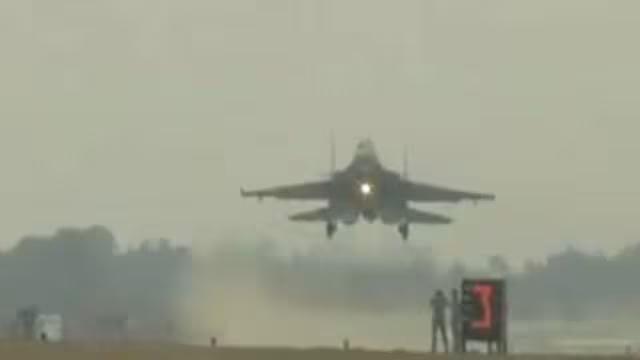
Why is IAF conducting fighter jets’ landing & take-off drill at Ganga Expressway in UP?
In a significant exercise, the Indian Air Force (IAF) recently conducted take-off and landing drills on the Ganga Expressway in Uttar Pradesh, using fighter jets like Rafale. The exercise, which included both day and night operations, aimed to assess the expressway’s potential as an alternative runway during times of war or national emergencies. This development has significant implications for the country’s military preparedness and security.
The Ganga Expressway, a 594-kilometer-long highway connecting Lucknow and Prayagraj, has made history by becoming the first airstrip on any expressway in India equipped to handle both day and night landings of jets. This feat has been achieved through the installation of necessary infrastructure, including navigation aids, communication systems, and lighting facilities.
The IAF’s decision to conduct the exercise on the Ganga Expressway is a strategic move aimed at identifying potential alternative runways in case of an emergency or war. The exercise involved fighter jets like Rafale, which are the most advanced and sophisticated in the Indian Air Force’s arsenal. The jets were operated by experienced pilots who executed take-off and landing drills with precision and finesse.
The Ganga Expressway, being a major highway, offered an ideal location for the exercise. Its length and width provided ample space for the fighter jets to take off and land safely, without compromising on speed or maneuverability. Moreover, the expressway’s proximity to key military bases and operational areas made it an attractive option for the IAF to test its capabilities.
The exercise was also a test of the expressway’s infrastructure, including its pavement, drainage system, and lighting facilities. The IAF’s assessment of the expressway’s capabilities will help the authorities to identify areas that require improvement or upgrading. This will enable the Ganga Expressway to become a viable alternative runway for the IAF in the future.
The use of fighter jets like Rafale in the exercise has significant implications for the country’s military preparedness. The Rafale jets are equipped with advanced avionics and weaponry, making them a formidable force on the battlefield. Their deployment in an exercise like this demonstrates the IAF’s commitment to staying ahead of the curve in terms of technology and training.
The Ganga Expressway’s potential as an alternative runway also has implications for the country’s national security. In the event of a war or national emergency, the IAF may need to use alternative runways to ensure uninterrupted operations. The Ganga Expressway’s capabilities make it an attractive option for the IAF, as it can be used to land and take off fighter jets quickly and safely.
The exercise has also generated significant interest among civilians, who are eager to know more about the IAF’s activities. The use of advanced fighter jets like Rafale in the exercise has sparked a debate about the IAF’s capabilities and preparedness. While some have raised concerns about the IAF’s ability to handle multiple fronts simultaneously, others have praised the force’s professionalism and dedication to duty.
In conclusion, the IAF’s exercise on the Ganga Expressway is a significant development that highlights the force’s commitment to staying ahead of the curve in terms of technology and training. The use of advanced fighter jets like Rafale in the exercise demonstrates the IAF’s capabilities and preparedness for any eventuality. As the country’s military preparedness continues to evolve, the Ganga Expressway’s potential as an alternative runway will play a crucial role in ensuring the IAF’s ability to respond quickly and effectively to any challenge.






